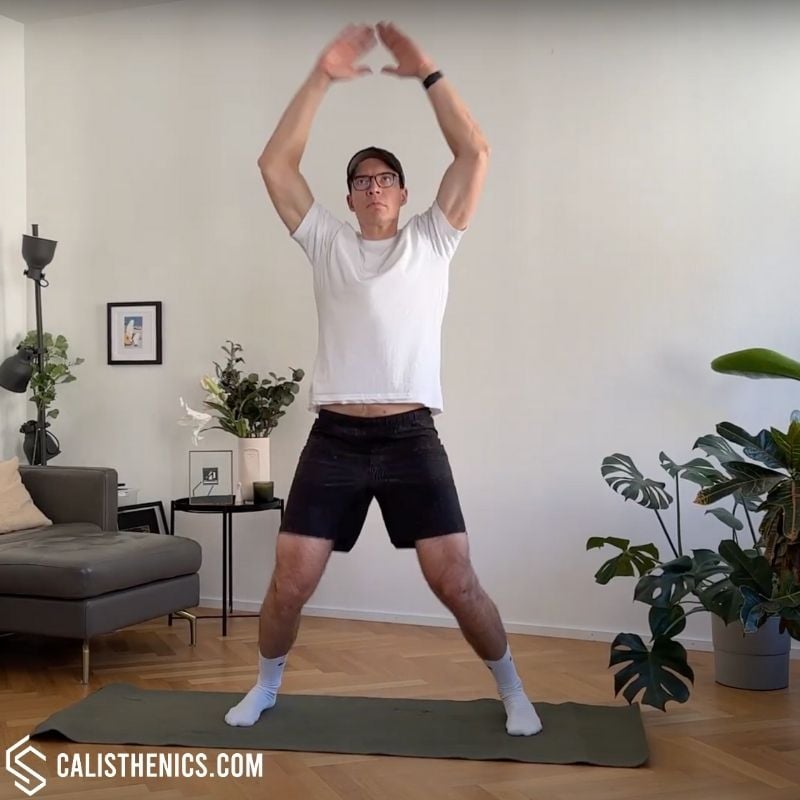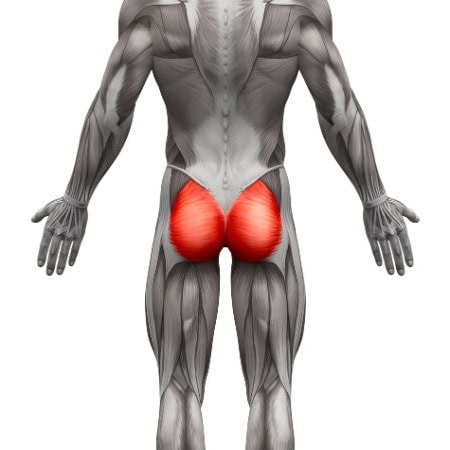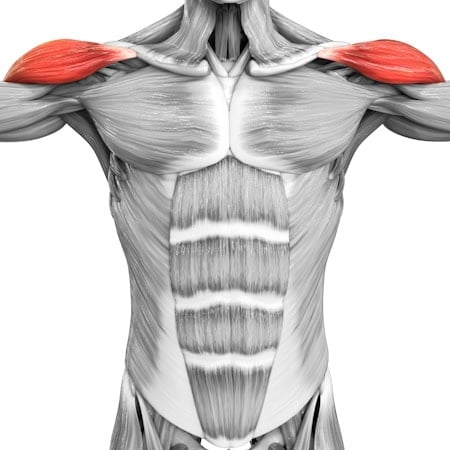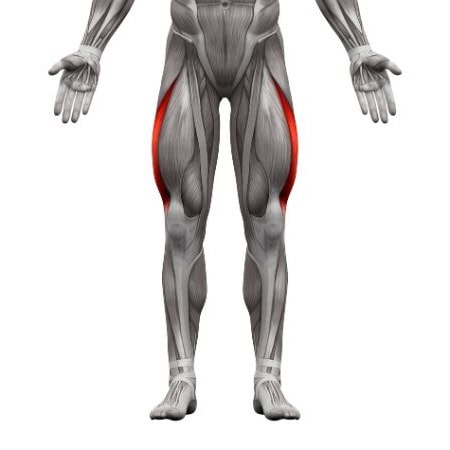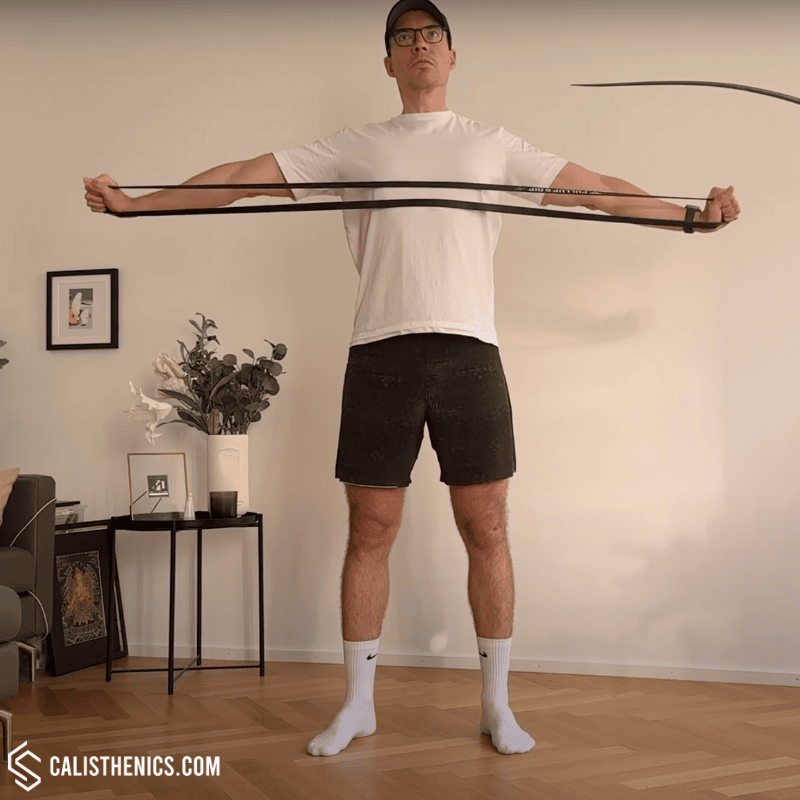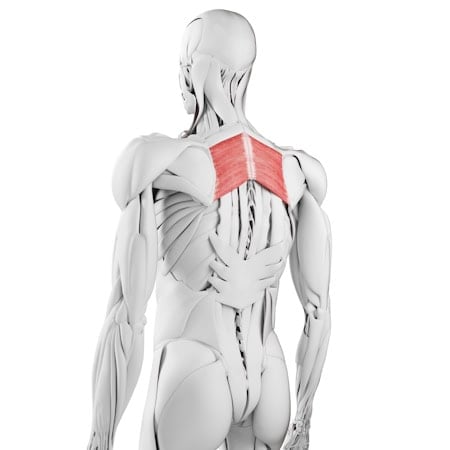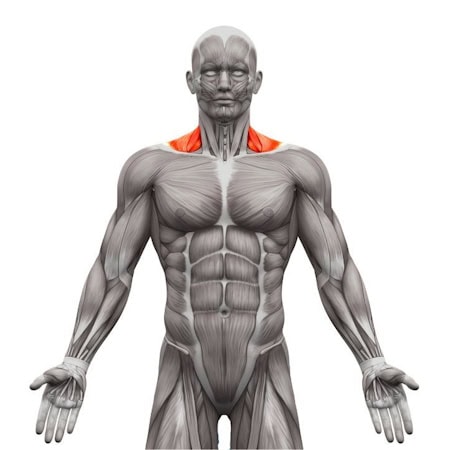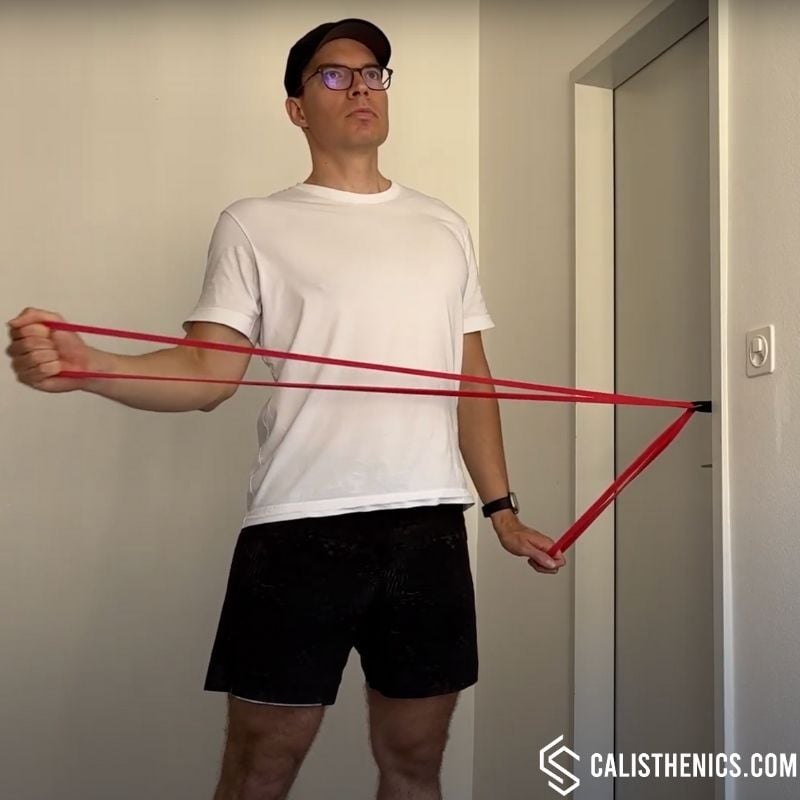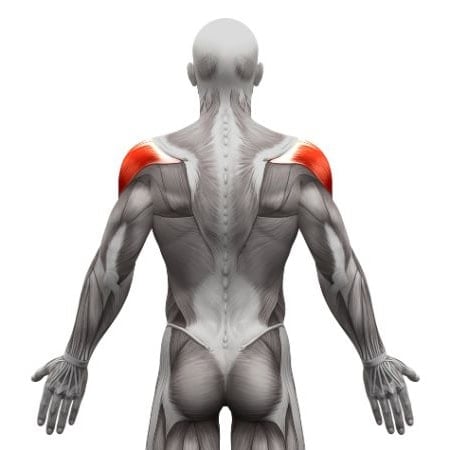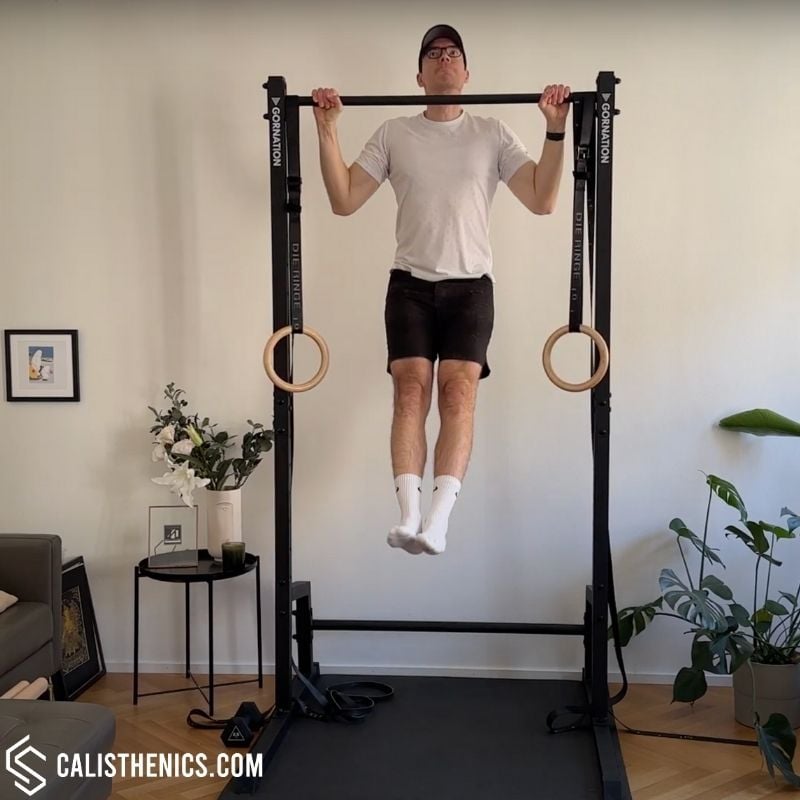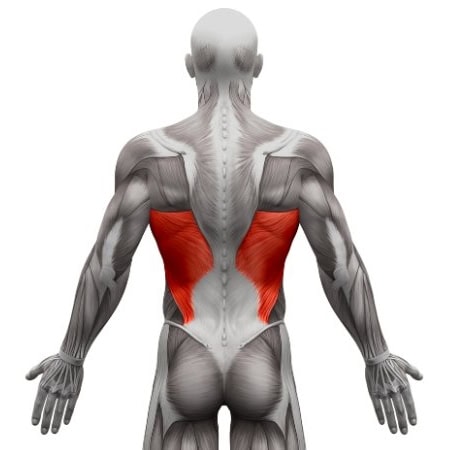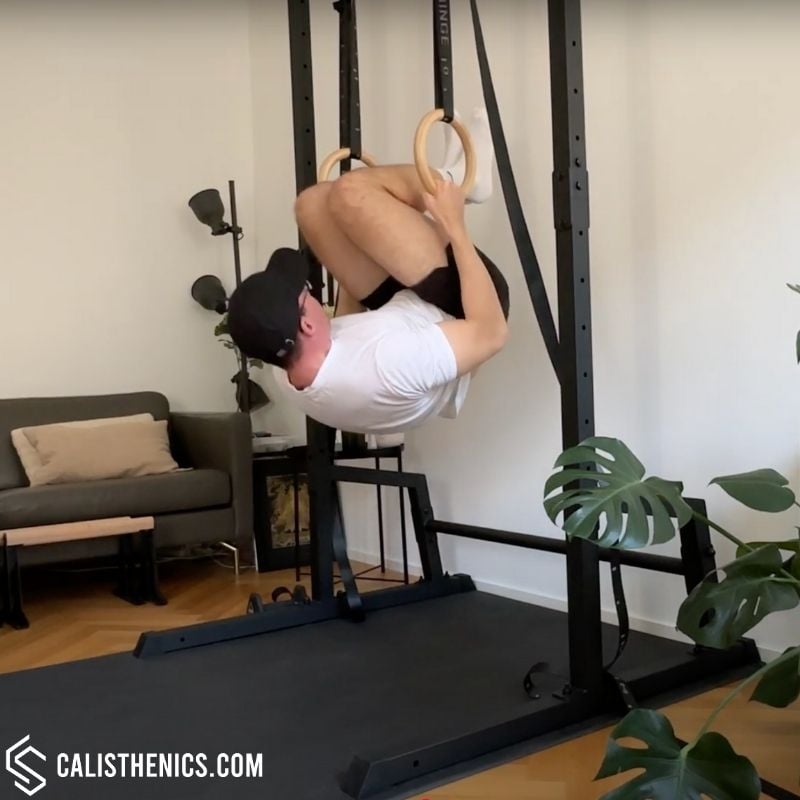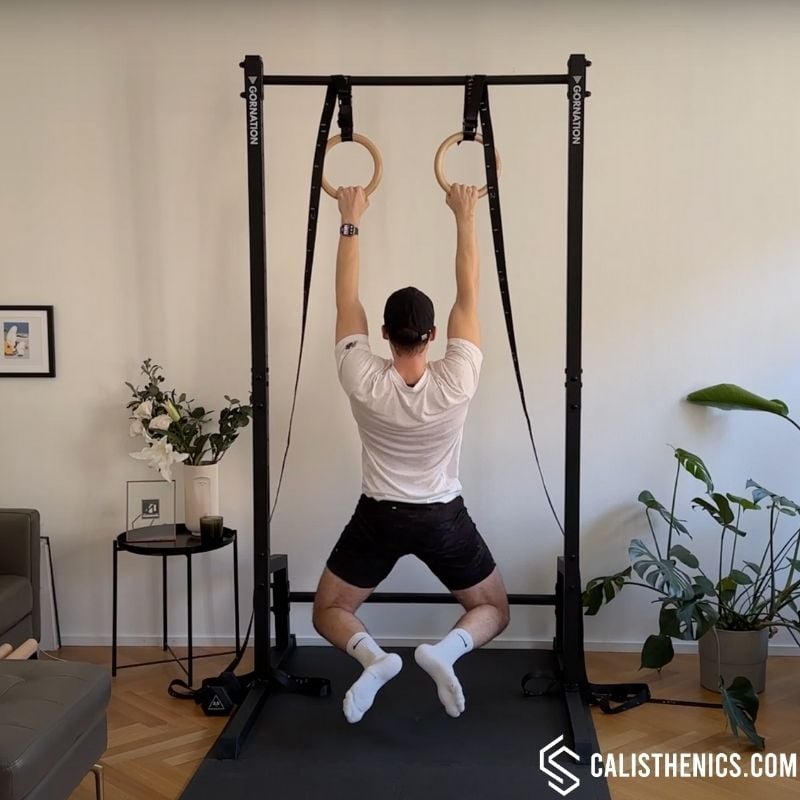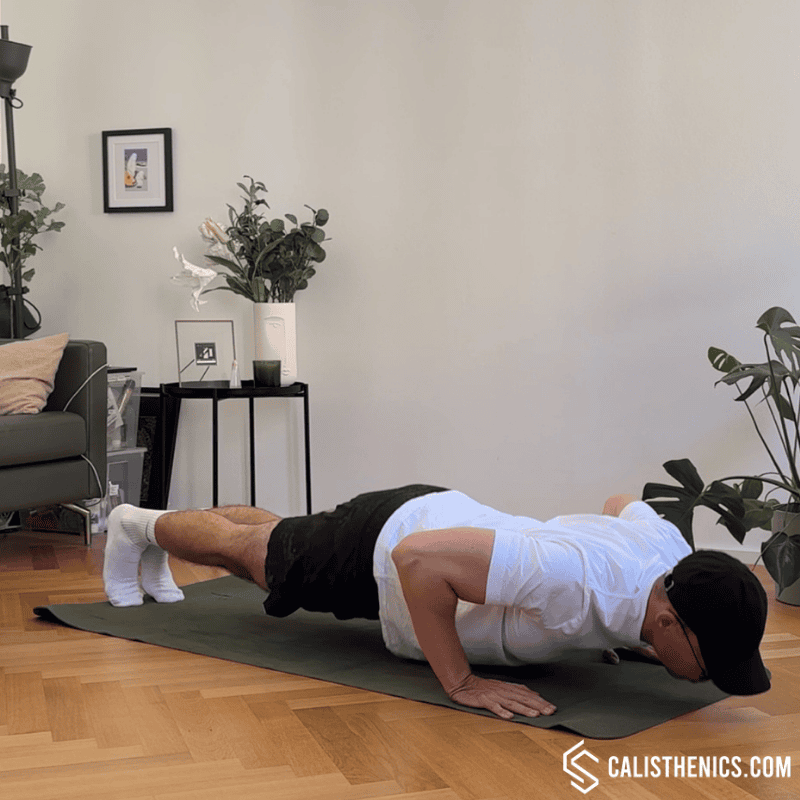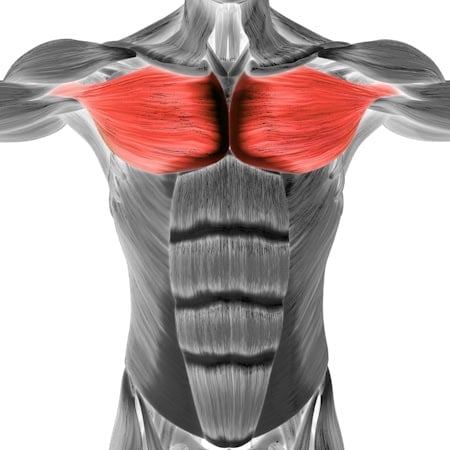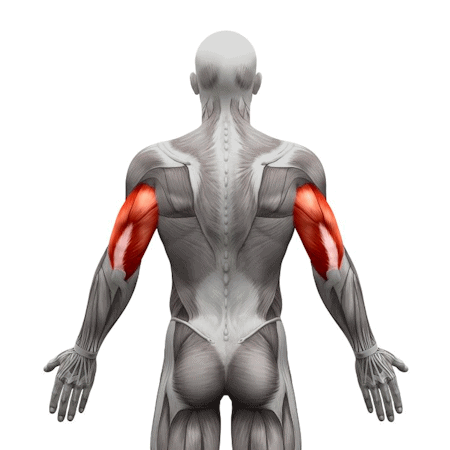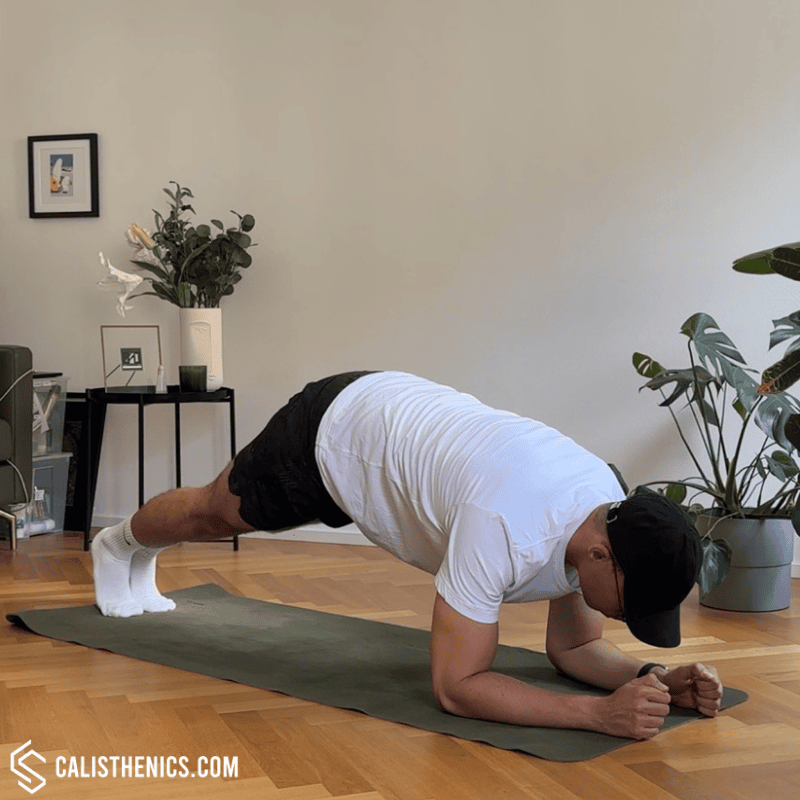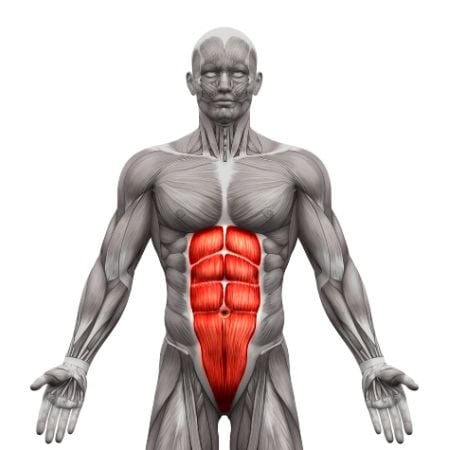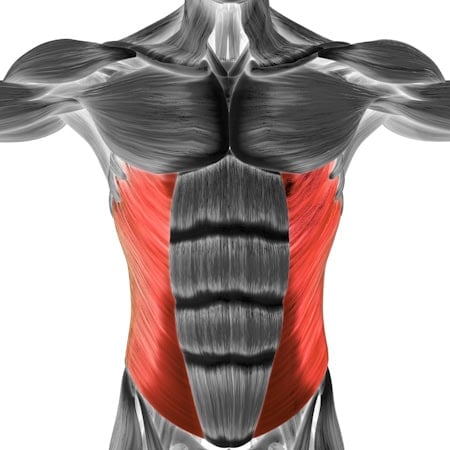🎯 Workout Description:
This workout is your final challenge. It brings together everything you’ve worked on: slow eccentrics, controlled rows, long isometric holds, and band work. It’s not about doing the most reps—it’s about doing every rep with maximum intent and effort.
👤 Who It’s For:
Graduates of the program ready to transition from assisted to unassisted reps, or solidify strength gains before repeating another cycle.
🧰 Equipment Needed:
- Pull-up bar ▶️ check out the best Pull-Up Bars for calisthenics
- Both ▶️ Gymnastics rings and ▶️ these Dip Bars are great for bodyweight rows
Warm-Up
Goal: Wake up the full pulling chain with dynamic and static prep.
Format: Circuit – 2 rounds, no rest between exercises or rounds
-
30 sec Jumping Jacks
-
10x Resistance Band Pull-Aparts
-
12x Rotator Cuff External Rotation

No muscle groups found for this post.
Tips
-
Move slowly and deliberately to avoid sudden movements.
-
Keep circles smooth and controlled—avoid jerky motions.
-
Breathe steadily and deeply to maximize relaxation and blood flow.
-
Gradually increase the range of motion as your joints warm up.
-
Perform each movement for 15-20 seconds, or until joints feel loosened.
-
Customize your routine slightly based on the specific demands of your workout.

Muscle groups:
Tips
-
Keep your movements light and bouncy, not stiff or stompy.
-
Maintain a steady breathing rhythm, especially in longer sets.
-
Engage your core to support posture and absorb shock.
-
Land on the balls of your feet and roll through the foot gently to protect your knees.
-
Scale the speed based on your fitness goal—slower for warm-up, faster for conditioning.
-
Stay relaxed in the shoulders and arms, avoiding unnecessary tension.
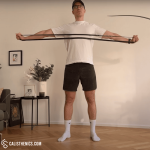
Tips
-
Squeeze Your Shoulder Blades: Focus on squeezing your shoulder blades together as you pull the band apart. This ensures that you engage the muscles of your upper back effectively.
-
Keep Arms Straight but Not Locked: Maintain straight arms during the movement, but avoid locking your elbows to protect your joints and maximize muscle engagement.
-
Core Engagement: Keep your core tight to prevent arching your back as you pull the band apart. A stable core helps maintain proper posture and prevents compensations.
-
Controlled Movement: Perform the movement slowly and with control, both when pulling the band apart and when returning to the starting position. Avoid jerking or using momentum.
-
Breathing: Exhale as you pull the band apart and inhale as you return to the starting position. Proper breathing helps maintain focus and control.
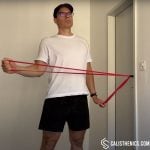
Muscle group:
Tips
-
Keep your wrist neutral throughout the movement to prevent strain.
-
Use a light resistance band to prioritize control and full range of motion.
-
Place a rolled-up towel under your elbow to improve muscle activation and prevent compensation.
-
Focus on high reps (12-20) with slow, controlled movement rather than heavy resistance.
-
Maintain even tension in the band throughout the motion to avoid jerky movements.
Strength
Goal: Use your highest-level pull-up progression with max intent and volume control.
Structure:
-
Superset A (4 rounds): A1 + A2, rest 2 minutes
-
Set B (2 sets): Performed alone, rest 45 sec
🟦 Superset A:
-
A1: Your highest progression:
→ Regular Pull-Up (if possible)
→ Band-Assisted Pull-Up
→ Slow Negative Pull-Up
Perform 3–5 high-quality reps
-
A2: Tuck Front Lever Row or BW Row with Elevated Feet – 6–8 reps
→ Rest 2 minutes between rounds
🟩 Set B:
-
Scapula Pull-Ups or Hanging Hold (active or passive) – 40 sec
→ Rest 45 sec between sets
Go all-in on quality here. This is your “graduation set”—put everything you’ve built into these final reps.
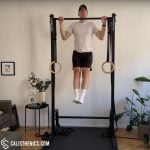
Tips
-
Keep your wrists neutral to avoid unnecessary strain.
-
Squeeze your glutes and engage your core to maintain body control.
-
Try a slight pause at the top to increase time under tension and improve muscle engagement.
-
Start the pulling motion by first engaging your scapulas before bending your arms.
-
Wrap your thumbs around the bar and use chalk or gloves for better hold.
-
If struggling with full reps, focus on negative pull-ups to build strength.
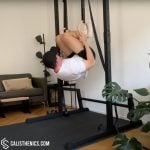
Tips
-
Keep your knees tucked tightly to reduce unnecessary movement.
-
Squeeze your glutes and core to maintain a rigid body line.
-
Use a controlled tempo to maximize strength gains—especially on the eccentric phase.
-
Adjust the angle of your body (pushing your knees further away from your chest into an advanced tuck front lever) to find an appropriate difficulty level.
-
Breathe steadily and avoid holding your breath, as it can cause unnecessary tension.
-
If grip is an issue, try wrapping your thumbs around the bar or rings for extra security.
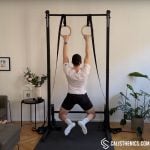
You can also perform it on a pull-up bar.
Alternative exercise: Hanging Hold (active or passive)
Tips
-
Keep Arms Straight – Do not bend your elbows; the movement should come only from the scapula.
-
Engage Your Core – Helps prevent excessive body movement or swinging.
-
Control the Descent – Avoid dropping too fast; lower with control.
-
Breathe Properly – Inhale while lowering, exhale while pulling your scapula together.
-
Use a Full Range of Motion – Ensure you fully depress and retract your scapula.
HIIT FInisher
Goal: Challenge core and upper-body stamina to end the program on a high.
Format: 4 rounds – 45 sec work / 15 sec rest
→ Alternate:
-
Push-Ups
-
Elbow Plank
→ 4 rounds = 10 minutes
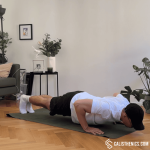
Muscle groups:
Tips
-
Body Alignment: Keep your body in a straight line from head to heels. Engage your core and glutes to prevent your hips from dropping or rising.
-
Hand Placement: Your hands should be positioned just outside of shoulder-width for optimal stability. Moving them closer or wider will target different muscles.
-
Elbow Positioning: Keep your elbows at about a 45-degree angle from your body, not flaring out too far to avoid shoulder strain.
-
Breathing: Inhale as you lower yourself, and exhale as you push back up. Controlled breathing improves strength and endurance.
-
Controlled Movements: Lower yourself slowly to build strength, then push back up with a smooth, steady motion.

Tips
-
Straight Body Line: Ensure your body forms a straight line from your head to your heels. Avoid raising or lowering your hips too much, as this can compromise form.
-
Core Engagement: Keep your core muscles tight throughout the entire exercise. This helps stabilize your spine and prevents your hips from sagging or arching.
-
Elbow Positioning: Your elbows should be directly under your shoulders, creating a strong base of support. This will also help engage your shoulders and reduce strain.
-
Steady Breathing: Focus on controlled, deep breaths. Inhale through your nose and exhale through your mouth, which helps stabilize your core and manage endurance.
-
Avoid Tension in the Neck: Keep your neck neutral by looking down at the floor to prevent any tension or strain in the neck.


